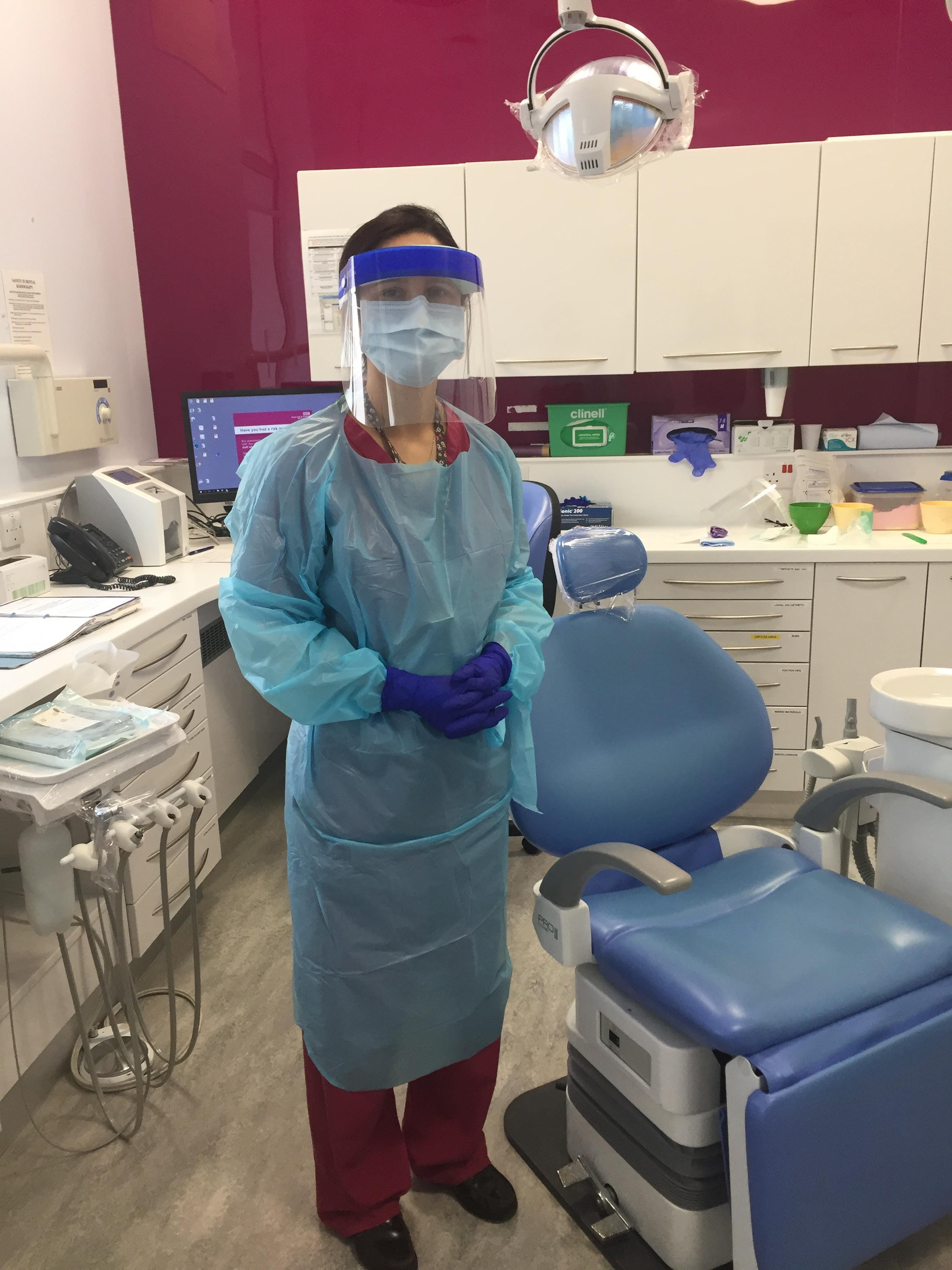COVID-19 and a tooth fairy dentist's difficulties

08 Sep 2020
Nabina Bhujel
Dr Nabina Bhujel is a Consultant in Paediatric Dentistry at Guy’s and St Thomas’ NHS Trust. In this blog series, she reflects on the impact of the coronavirus pandemic on young patients and highlights the value of communication skills.
I go to the waiting room to fetch a little girl with a weary face. As she gets up from her chair, I greet the girl with a broad smile, give her a friendly high five and walk her towards the treatment room. As we walk together in the corridor and by the time she is in the dental chair, the young patient would have told me which school she goes to and the plan for her upcoming birthday party. I tell the girl how I am going to make her poorly tooth better, share small, well-versed jokes and try to get a smile out of her. Before I put my mask on and get ready to treat the child’s tooth, I would by now detect some signs of reassurance in her face. After the planned dental extraction, I would tell my patient that I will write a nice letter to the tooth fairy sending her the extracted tooth in the tooth fairy envelope.
That was before we lived with the realities of COVID-19!
Who knew how significantly life would change due to this pandemic? As per the guidelines published by The Royal College of Surgeons of England, we have started the recovery phase and are seeing children for routine appointments albeit at limited capacity. Our days are also filled with urgent dental paediatric cases desperate for some relief from toothache and infection. The trip to and from the waiting room with a child is nothing like it used to be. With face masks, visors and gowns already on, it is now impossible to build that all-important initial rapport with the young patient. I may be smiling widely but nobody can see it. I want to talk with the child but feel like I am shouting to be heard. Offering a high five feels odd. The child is scared, has had a toothache for the last few days and is with a paediatric dentist and a dental nurse who are both trying to reassure them but are hidden underneath the layers of personal protective equipment (PPE), worn for the protection of the child, their guardian and staff.
Even in normal times, dentistry invokes a degree of anxiety in patients, both adults and children. While the adults may understand and accept the changes that COVID-19 has brought about in their interaction with clinicians, children sadly will not find it easy. Rather than being uncooperative, all children are either 'cooperative' or 'potentially cooperative'. However, in order to gain the trust and cooperation of children, and therefore convert a child from the ‘potentially cooperative’ to the definitely 'cooperative’ group, behaviour management is an integral part of the dental specialty. A number of strategies can be implemented for this, which include preparatory information, use of non-verbal cues and voice control. Unfortunately, these are not only difficult but rather impossible beneath PPE. I tell my young patients that I cannot high five because of the ‘silly’ virus which rides in the air but that I can clap instead! Maybe this is the new normal that everyone talks about and this new normal appears like it is here to stay and we just have to get used to it. While some of my colleagues learnt new skills from redeployment to different areas of patient care, I am constantly thinking about how I can modify and be creative with my behaviour management and communication skills.
Such challenges have led me to consider the impact of COVID-19 on people with deafblindness, who often depend on the use of touch to communicate their needs. What about now, however? When there is a constant fear of contagion? In normal circumstances, hospitals and healthcare providers would be able to provide services such as tactile sign language, interpreters or hand-held amplification devices, among others. Yet, with strict social distancing and sanitisation implementations due to the pandemic, charities and organisations supporting deafblind individuals have voiced concerns around inclusivity and accessibility. Does the health and social care setting have enough resources to ensure that no-one is left behind? Personally, I know that I require the right tools and capabilities to support a deafblind child in communicating their thoughts and expressing themselves in a dental setting. While being detrimental in so many respects, the global pandemic has urged us to think outside of the box. Crucially, it has brought into focus just how fundamental accessibility measures are and just how much we must still do to ensure inclusivity for all.
As a paediatric dentist, I cannot wait to go back to my full armamentarium of behaviour management skills, which will now be enhanced. More importantly, I’m eagerly awaiting this ‘silly’ virus to end so I can see my young patients’ beaming smiles and resume enthusiastic high fives.
'I am constantly thinking about how I can modify and be creative with my behaviour management and communication skills.'
This blog is from our series COVID-19: views from the NHS frontline. If you would like to write a blog for us, please contact content@rcseng.ac.uk.

